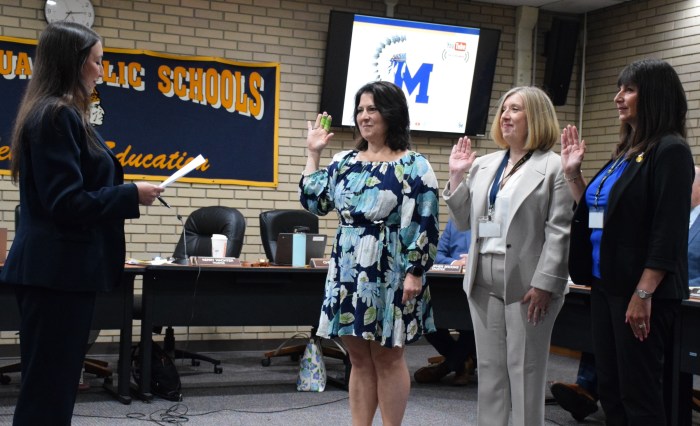Part two of three:

As previously reported in the Jan. 21 issue of the Massapequa Observer, the Grumman Plume bill was recently passed into law by Governor Andrew Cuomo. The bill has been the legacy of NY State Assemblyman Joseph Saladino, who is about to embark on the next phase of the cleanup plan.
“Over the years, before we realized how chemicals have an effect on our bodies, companies would empty their byproducts into steel drums and bury them in the ground,” said Saladino of the industrial sites on Long Island where construction work was done. “Over time, the drums would rust and burst. In the case of Grumman, the company used floor drains to direct the chemicals into the ground or put them in ponds to evaporate.”
As an aerospace company, Grumman was the hub for plane construction and remodeling. When planes were built, they were then washed off with chemicals, including dangerous oils and the carcinogen trichloroethylene (TCE). According to Saladino, those chemicals—along with various sediments—made their way into the ground, and in turn, Long Island’s drinking water.
“This took place for many years; the chemicals found their way into the Upper Glacial and then into the Magothy aquifer,” said Saladino, who also added that the underflow of water does not flow in a straight direction but goes toward the Great South Bay on the south side and towards the LI Sound on the north side.
In order to prove that Grumman was incorrect about the danger of the plume, Saladino enlisted help from across Nassau County, including the help of former Deputy Commissioner John Caruso.
“At one point in time, the county had a site called the Purex in East Meadow, which was responsible for decontaminating chemicals,” said Caruso, who was also the former commissioner of the Massapequa Water District. “We went after Purex and recaptured the contaminated water, treated it and put it back into the ground. After 25 years, it worked there.” The cleanup process also worked at the Nassau County Fireman’s Training Center, as well as other places across the United States.
According to Saladino, Long Island is a complicated, geologic nightmare with natural breaks in the lens and other areas due to natural formation. It is in those areas where the clay is more permeable, allowing chemicals to seep through at a faster rate.
“There have been limited studies around the nation to tell us what will happen if the plume ever got into the Great South Bay,” said Saladino. “We do know it will reach the Great South Bay and that it will have consequences, but to what degree, we don’t know. Hydraulic containment is the only way to prevent any leaks.”
With a background in marine science (he is also a diver and avid fisherman), Saladino has done extensive research on the subject, including what contaminated water means for Long Island’s seafood industry.
“In terms of the contaminants getting into our seafood, we do not know if they will stay in the fish and shellfish, and if we will be able to consume them,” he said. “However, we do know that sea creatures are bio-filters; a clam is a perfect example. It brings in the water, filters it and then siphons it back out, feeding on what is in the water. The latest indicators show us that the Great South Bay is not diluted.” First and foremost, Saladino and his team, which includes Caruso, want to take the safest approach and protect people’s health and the environment. In order to do that, he must stop the encroachment of the plume, get it remediated, and remove the chemicals.
“We would draw the water out in different areas and bring it back to a treatment plant, which the state would be responsible for paying and building,” said Caruso. “Instead of injecting it back into people’s homes, we would pump it into the aquifer.”
Saladino added that the process is very similar to that of the role of a fish tank filter.
“The cycling of the water over and over would take the contaminants out, just like a fish tank filter. In order to do this, we need to bring everyone together, all of the elected officials and water districts, and find the best way to go about it.”
According to Saladino, the best option is to utilize a combination of hydraulic containment and well head treatment.
“We have been proving all along that this is the right thing to do to protect our water and the Great South Bay and to stop the plume from moving,” said Saladino. “It’s the best way the experts —all water districts, engineers, environmental engineers—have come up with and I want to make sure that we use all data, resources and that we get money from the federal government, namely the Navy and Grumman, because both are responsible parties. We need to do this right and not cut corners to save money.”
This is part two of a three-part series. The next issue will discuss the people involved who helped pass the bill, and what hurdles they must now overcome to see the decontamination plan through.






























